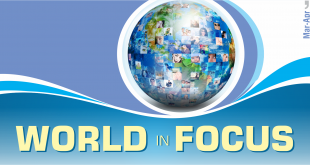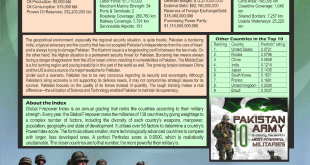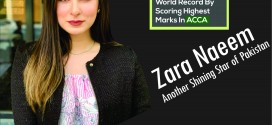“Without imperfection I and you would not exist” — (Stephen Hawking)
Nothing can hide the talent and skills of a person. It is a known fact that talented and skilful people, even disabled, always shine like stars. However, the term ‘disabled’ has more social connotations than the medical ones as it creates a demarcation line between who is able and who is not. There is no denying the fact that most of the ‘normal and able’ people are disabled in terms of skills and talents. They lack guts to do something extraordinary despite the fact that they are physically fit and hale and hearty. But, there are some special people who are considered ‘disabled’ but they have more potential and capabilities than their normal fellows. World-famous physicist, cosmologist and author Stephen Hawking is the most pertinent example in this context. Thus, it would be apt to say that disability can be a physical limitation, but it cannot limit a person’s skills and talents.
It seems pertinent here to cite the example of Stephen Hawking as he is the person who, in spite of being physically disabled, became the most renowned and revered scientist all over the world, and his thoughts and ideas revolutionized the world of science. Exhorting the disabled individuals, Hawking says, “My advice to other disabled people would be, concentrate on things your disability doesn’t prevent you from doing well, and don’t regret the things it interferes with. Don’t be disabled in spirit, as well as physically.”
The Oxford Dictionary defines disability as ‘a physical or mental condition that means you cannot use a part of your body completely or easily, or that you cannot learn easily’. But this definition is confined to mere physicality of a person; if we dissect the word ‘disabled’, other clear manifestations come to the fore. The literal meaning of disabled is ‘not able to work’. And, if we go by this meaning, it would not be an exaggeration if we say that everyone is disabled, in one way or another. Every person is fit for a particular job; for instance, an engineer is suitable for building bridges, roads and dams but he cannot perform a surgery as it is the work of a doctor, and so is the case with a doctor.
Disability can also be referred to a lack of spirit, enthusiasm and passion in doing any task. In the words of Aimee Mullins: “I think that everyone has something about themselves that they feel is their weakness … their ‘disability’. And I’m certain we all have one, because I think of a disability as being anything which undermines our belief and confidence in our own abilities.”
Moreover, there are two basic models which explain and help us in understanding disability: medical model and social model. According to former, a disability is a problem of the person directly caused by disease, trauma or other health conditions which, therefore, requires sustained medical care in the form of treatment by professional medics. In the medical model, management of disability is aimed at “cure,” or the individual’s adjustment and behavioural change that would lead to an “almost-cured” state. In this model, care is viewed as the main issue, while in the realm of policy, “the principal response is that of modifying or reforming healthcare policy” (Medical Model Disability)”. From the social model perspective, “disability” is a socially-created problem and a matter of full integration of individuals into society. In this model, disability is not an attribute of an individual; rather it’s a complex collection of conditions created by the social environment. Management of the problem requires social action and it is the collective responsibility of society to create an environment where limitations for disabled people are minimal. Disability is both cultural and ideological in creation. According to the social model, equal access for someone with a disability is a human rights concern.
Read More: CSS qualified persons with disability can now join Foreign Service of Pakistan
After briefly discussing both models, let’s have a look at the notions of physical disability and talents.
It is true that a person can be disabled physically, due to a disease or any other health conditions, but his ideas, talents and skills cannot be disabled. Such a person can overcome physical disability through constructive ideas, abilities and skills. We find numerous examples in world history when the ‘disabled’ people achieved astonishing success. They did so with the help of their radical thoughts, profound ideas and consummate skills.
Besides Stephen Hawking, another brilliant person who, despite being ‘disabled’ shook the world with his profound impact on science, was the noted German physicist Albert Einstein. Owing to a disability, he could not speak until the age of 3. He had a very difficult time doing mathematics in school and it was equally hard for him to express himself through writing. He was severely dyslexic and autistic; some people even claim that he was struck out of school because he had weak learning abilities. In spite of this big disability, Einstein never considered it a hurdle in his way and kept on working until he became what the world knows him as today: Albert Einstein, a venerable and respected figure in the field of science. The great Einstein fought his disability and entered into the world of theoretical physics where he changed the face of physics and science forever. His theory of relativity is said to be the most revolutionary theory in physics. He won a Nobel Prize for his photoelectric effect theory in 1921.
It would also be fair to mention the US-born Robert Michael Hansel, a Guinness World Records holder for the longest non-stop wheelie in a wheelchair, covering a total distance of 6.178 miles. He was born with the birth defect known as spina bifida – a birth defect where there is incomplete closing of the backbone and membranes around the spinal cord. But, he had courage and will to break all the barriers that could come his way. He never thought about his disability as a limitation. He once said, “I choose not to place ‘DIS’ in my ability.” Having such spirit and passion, he achieved many awards and honours such as State of New York Executive Chamber Certificate of Commendation, Guinness World Record Holder, Spokesperson for Athletes for Hope and 2008 Go Fast Sports & Beverage Athlete.
Another living example of a person who never allowed disability to limit his dreams is Nihar Alam, the skipper of Pakistan Disabled Cricket team. Alam belongs to district Charsadda in Khyber Pakhtunkhwa. He is disabled with his right hand. However, despite this impediment, he never lost hope and kept on trying to achieve more and more. And, his day finally came when he finally became the captain of Pakistan Disable Team. He is leading the team successfully and under his able leadership and captaincy, Pakistan have won many a series, both abroad and inside the country. Recently, he also won Player of the Year Award.
Thus, it becomes patently clear that physical disability cannot impede a person’s skills and abilities.
To conclude, physical disabilities cannot steal a person’s abilities and talents; it is rather a lack of spirit, enthusiasm and passion that makes a person disabled, both physically and mentally. In a nutshell, it would be apt to sum up the whole discussion in the words of Emma Thomson who very rightly said: “Being disabled should not mean being disqualified from having access to every aspect of life.”
 Jahangir's World Times First Comprehensive Magazine for students/teachers of competitive exams and general readers as well.
Jahangir's World Times First Comprehensive Magazine for students/teachers of competitive exams and general readers as well.



